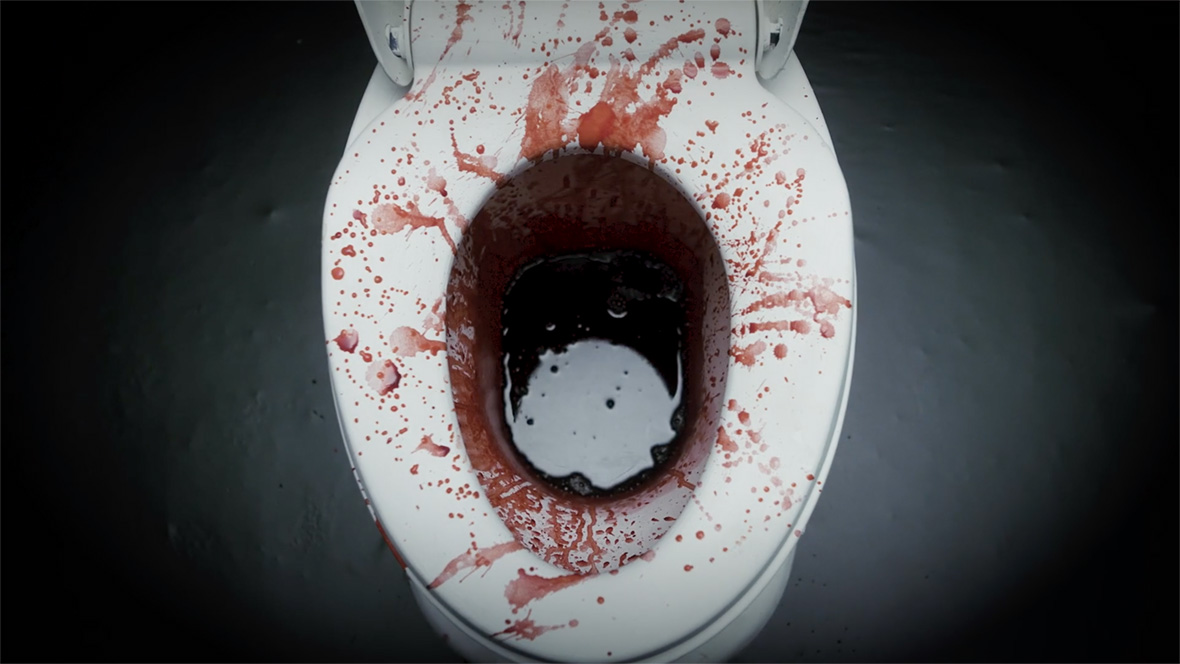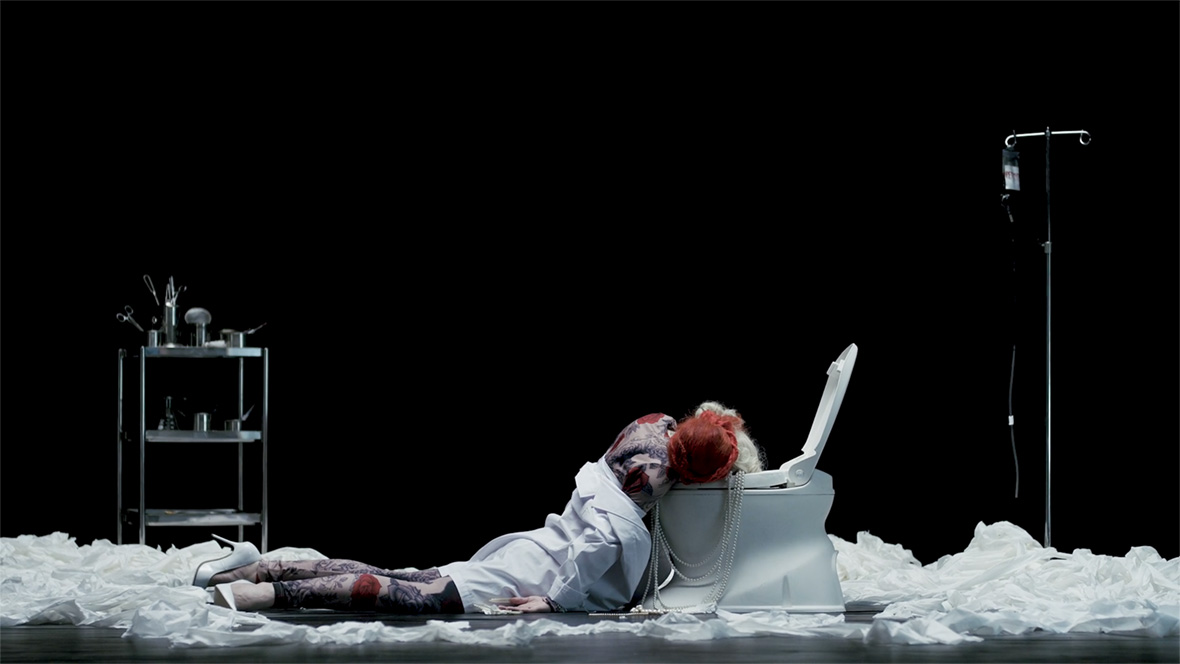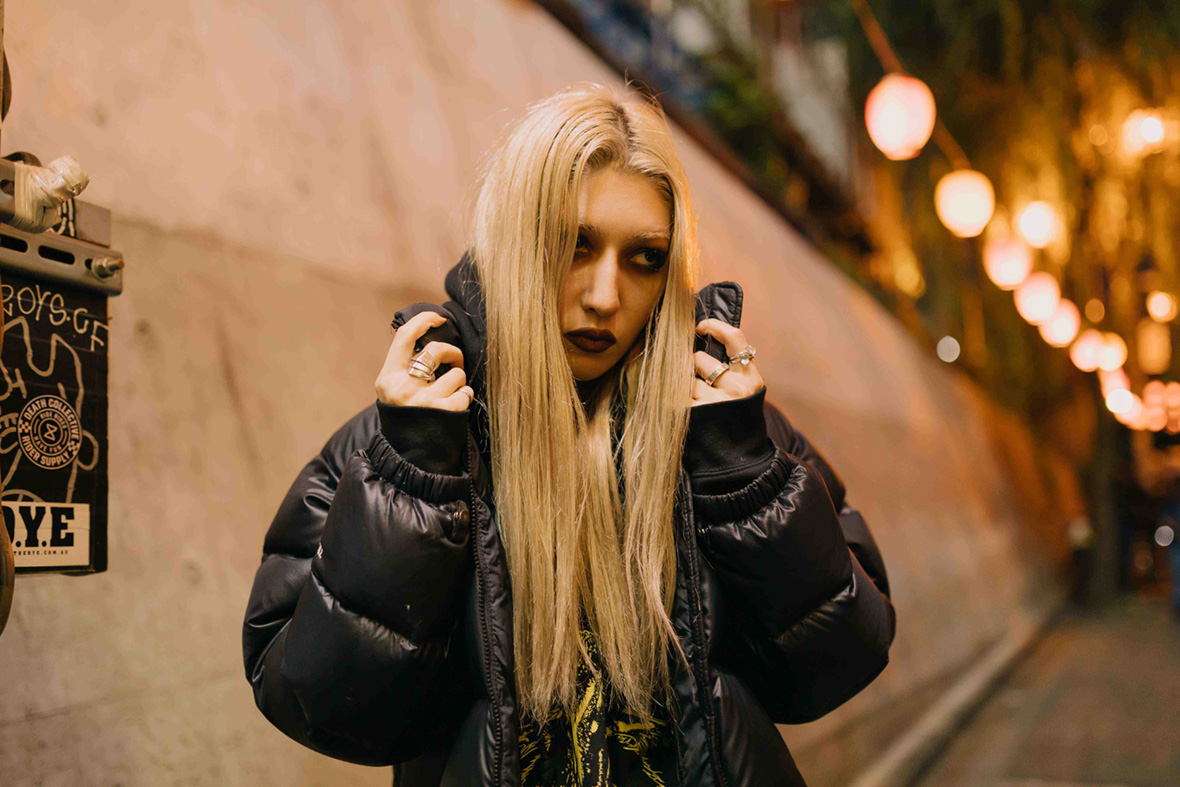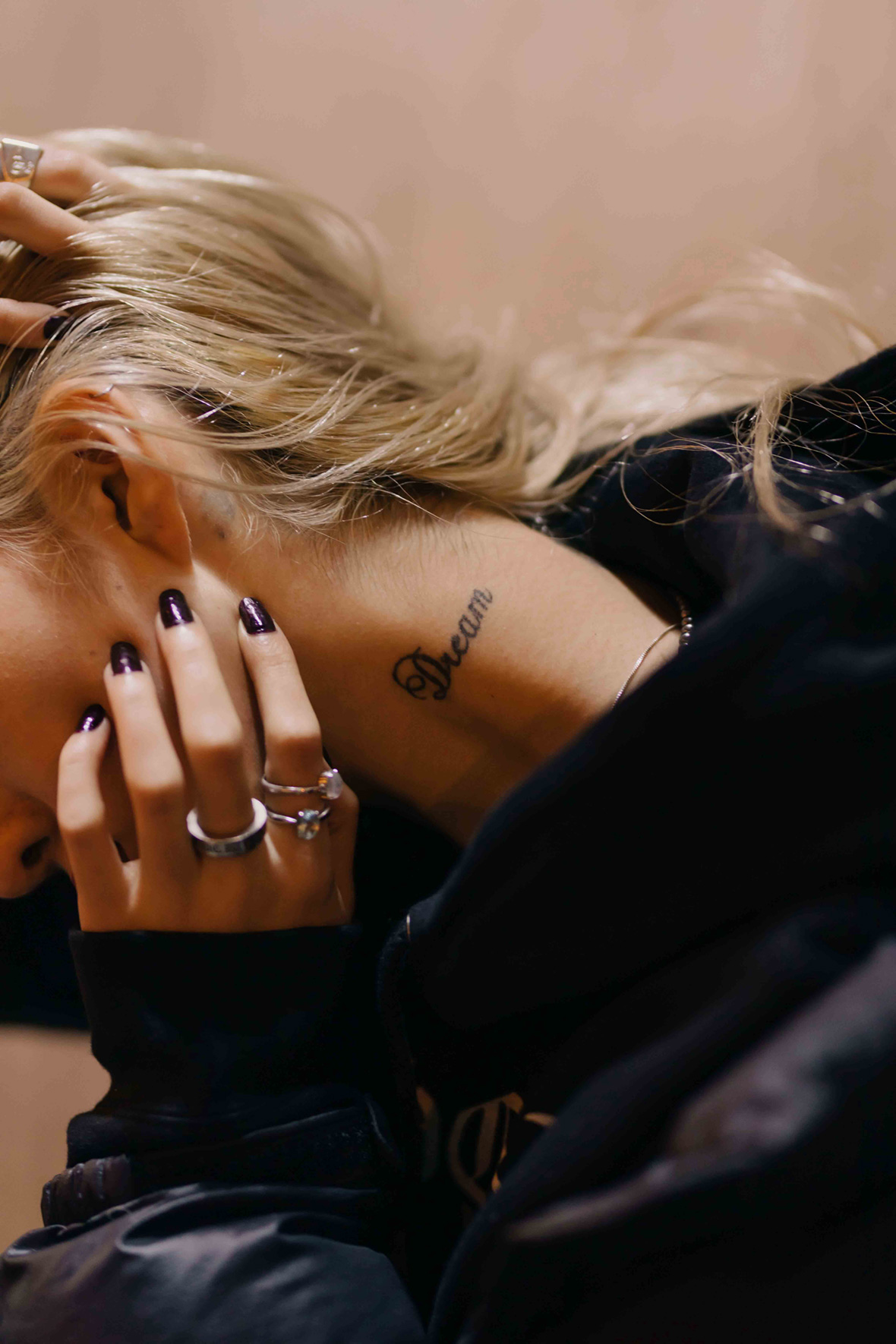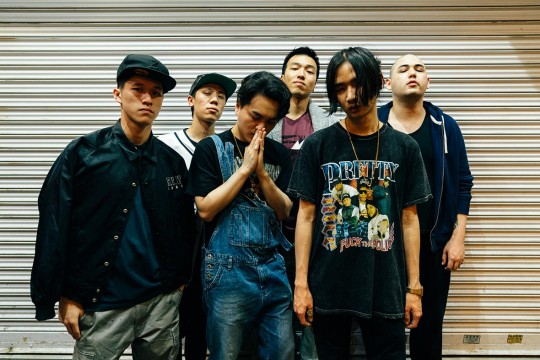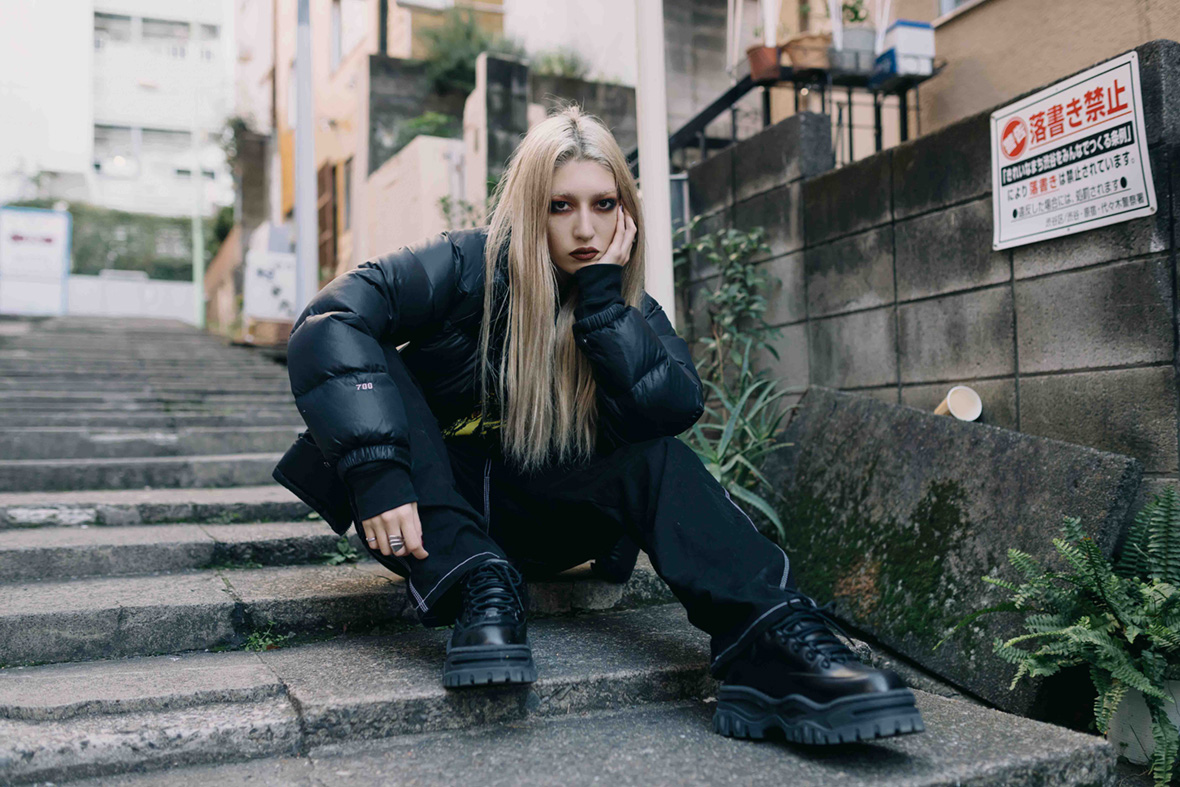
The end of the decade sees us firmly in a new golden era for music videos. Although they’re not the only way for musicians to blow up, having an engaging music video definitely gives artists an advantage in cutting through the noise. Japan’s Nina Utashiro is someone who clearly knows how to do just that. A newcomer to the rap scene, she has a solid resume in photography, fashion styling, writing, and creative direction. Under her Thirteen13 alias, she combines a dozen different ideas into her music videos, bringing horrorcore rap together with cinematic visuals, couture fashion, and a powerful sense of transgression.
二十世纪一零年代的尾声,我们亲眼目睹着这个音乐视频的黄金时代。尽管音乐视频并不是音乐人唯一炸开锅的道具,但绝对是夺人眼球的有力方式。来自日本的 Nina Utashiro 非常明白这一点,并且知道该怎么做。作为说唱场景的新晋音乐人,Nina 有着坚实的摄影、造型、创意和写作根基。她与创作团队 Thirteen13 一道在音乐视频中加入的很多个人想法,将恐怖核说唱(horrorcore rap)裹挟在影院级别的视觉效果、时装造型之下,带着十足的叛逆劲儿,让人一饱眼福。
“Originally, the Thirteen13 project was going to be anonymous, but my background and look are clear advantages,” she says. Music videos have become her passion. “Sometimes the video concept even comes first and the music comes after,” she says. “I’m a very visual person, and creating the video is really my favorite part.” It’s made her realize that executing other people’s ideas isn’t fulfilling enough anymore. While she’d like to collaborate with others in the future, she wants full control now.
“起初 Thirteen13 团队的名字并不打算公开,不过视频中我的造型和布景的确非常抢眼,” Nina 说道。目前,拍摄音乐视频已经成为 Nina 热衷的事。“有时候,音乐视频的概念甚至要比音乐本身早一步出现”, 她说,“我是一个很在乎视觉的人,创造视频是我最喜欢的环节。”这也让她意识到执行别人的想法并不能满足自己,尽管未来她愿意与更多人合作,但目前的 Nina 更喜欢一手操盘的感觉。

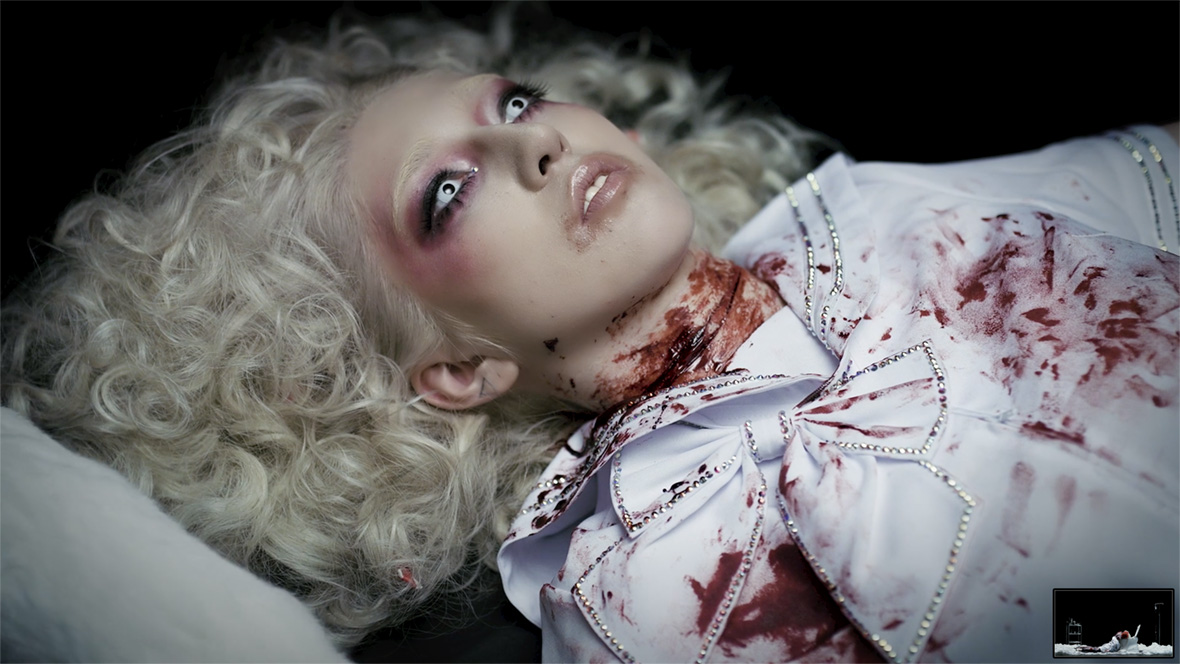
In her newest video “Omerta,” she plays with taboos, gleefully spilling secrets. It’s not quite a music video, and instead splices a couple of different segments of partial songs with faux interviews. The comical interviews are simply shot but highly stylized and filled with bright colors, while the music scenes are aggressive and dark. She raps in low ASMR tones over hardcore club music and rusty industrial beats while stark lighting casts heavy shadows on her costumes and sets.
In “Blood,” which is her most complete vision, Utashiro’s character is seen in a series of costumes, with repurposed high fashion outfits, intricate nails, and detailed set design. She takes vengeance on a collection of victims, which is reflected in the lyrics as well, where she lashes out at those who’ve taken advantage of her.
在 Nina 最新的音乐视频《Omerta》中,她大玩禁忌,兴高采烈地散播着深奥的秘密。《Omerta》并不完全像是一部真正意义上的音乐视频,而是在音乐的不同段落穿插了虚假采访内容。有趣的采访镜头看似简单,但其实每一位受采访者都被精心装扮,艳丽的色彩与激进、暗黑的音乐场景形成鲜明对比。音乐部分中,伴随着强烈的先锋俱乐部之声与锈迹斑斑的工业节奏,Nina 细碎的低吟试图让听众到达颅内高潮;画面里,阴冷的光线照射在她的衣服和布景上,投射出沉重、可怖的阴影。
在音乐视频《Blood》中,Nina Utashiro 所扮演的角色身穿一系列服装,其由高端时装重新改造而成,加上精致的指甲彩绘和布景设计,是 Nina 迄今为止最具完整性的视觉作品。视频中展现多个施害的残酷行径,其实是抨击那些曾经占过 Nina 便宜的人,同样也体现在歌词中。
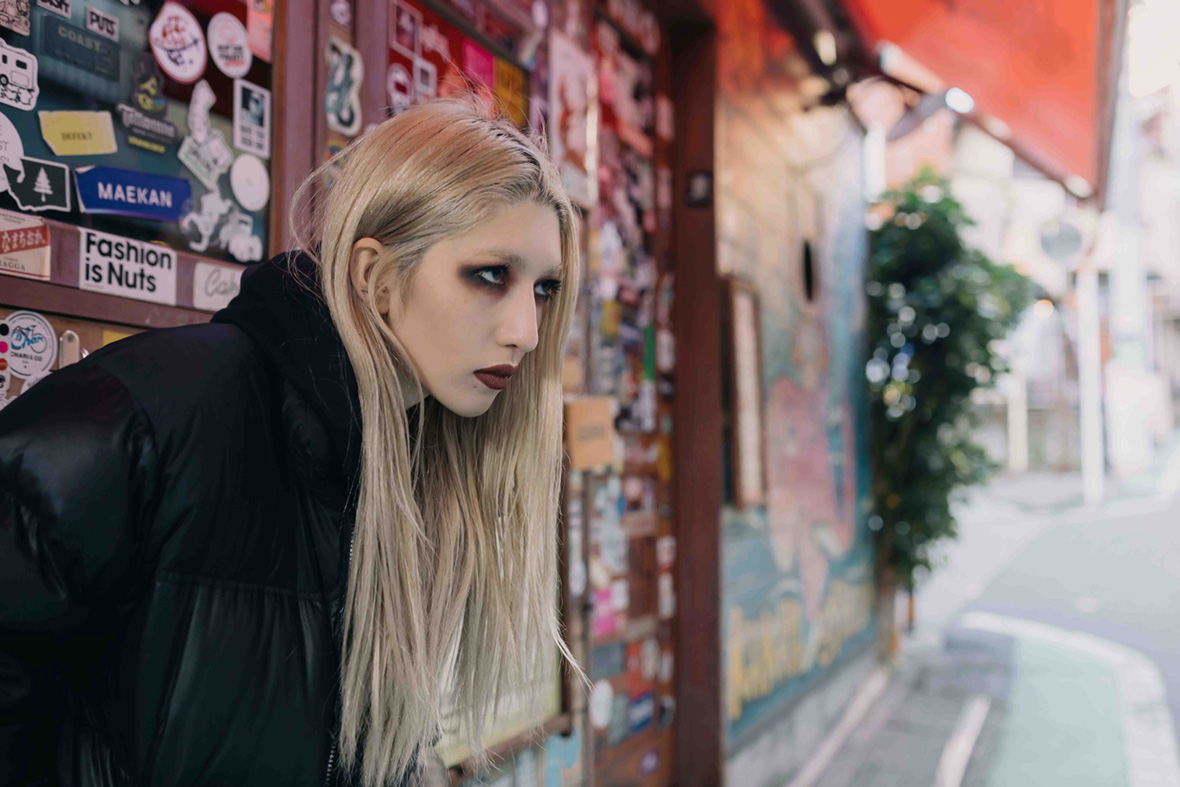
Her foray into rap hasn’t been without controversy. Some critics have dismissed her as an Instagrammer and told her to stick to fashion. “Otaku culture is big here in Japan, so it’s all about finding what you like and sticking to it. That’s never been what I do. I do a lot of things. But you can’t be behind the scenes as a rapper, so now my face is out there.”
Utashiro’s appearance has always stood out. As a German-Japanese kid growing up in Tokyo, it was impossible for her to forget she was unlike her peers. “Japan is extremely homogeneous. Everyone knew me because my name and face were different,” she says. “It’s not good or bad, but the concept of independence was given to me at a very young age. I was always very solitary.”
不过,她对说唱的尝试并非毫无争议。一些键盘侠并不为她的 Instagram 买账,他们劝 Nina 乖乖去做时尚。“宅男文化在日本十分盛行,他们在于找到自己喜欢的一样东西并坚持下去。 那从来不是我要做的,我要做更多的事情。但是作为说唱歌手你不能总在幕后,所以你才看到现在的我。”
Nina 的造型往往更为突出。作为一名东京长大的德裔日本姑娘,忘记自己与同龄的差别似乎不太容易,“日本是一个非常同类分化的国度。所有人都知道我的名字和面庞和大家不太一样,”她说,“这样的现象并没有好坏之分,但我很小的时候就被灌输了独立的思想。因此,我总是感觉很孤独。”
Listen to some of our favorite tracks from Thirteen13 below:
点击即可试听 Thirteen13 的几首精选歌曲:
In middle school, she was drawn to metal, partly in opposition to the hypocrisy she saw in her father’s Catholic side of the family. “They were extremely intense, so I was rebellious towards them. My dad bordered on being a white supremacist. I was confused because he was married to my mom, a Japanese woman. I still don’t understand that. My mom was the polar opposite, accepting of everybody.” Always looking for the positive side of things, she says her father provided a model of what not to be. But she’s still lashing out at them, and the metal influence remains a part of her life. Her Thirteen13 persona is demonic and purposely antagonistic towards the church.
After her parents divorced, Utashiro moved with her mother to Manhattan, where she went to public high school at 16. It was life-changing. “My school was mainly black, Latino, and Chinese. I didn’t understand poverty, I had never seen drugs. I’d never experienced diversity,” she recalls. “In New York, there’s this level of respect for different cultures that doesn’t exist in Japan. But I got myself in trouble at school. Everyone was saying the n-word to each other and I didn’t know where it came from. I said it and my friends were like, ‘Look bitch, you can’t say that word.’ It was one of the best and hardest experiences of my life.” New York was also were she fell in love with hip hop, a constant in her ever-evolving creative identity. She graduated high school early and quickly went on to study at Columbia University where she began her exploration of fashion.
中学时期的 Nina 沉迷于重金属音乐,部分原因是因为她希望用这样的音乐形式,来对抗父亲的天主教式家庭中的虚伪一面。“那段时间家人的关系非常紧张,我对他们来说也太过叛逆。我的爸爸基本上算是一个白人至上主义者。所以我不明白他为什么要娶我妈妈,一位日本女性。我妈妈是极端主义的反对者,她接受任何身份的人。” Nina 一直寻找身边事物的积极方面,她认为自己的父亲是一个负面案例,提醒她什么不该做。但她依然对父亲曾经的举动感到愤怒,金属音乐对她的影响将会持续至她整个人生。而她在 Thirteen13 打造下的恶魔人设,则是为了刻意与教堂做对。
父母离婚之后,Nina 和她的妈妈搬去了曼哈顿,十六岁时去了公立高中念书,在那里彻底改变了她的人生。“学校的学生主要以黑人、拉丁人和华人构成。入校之前,我从未理解过贫穷,从没见过毒品,也从未体验过多样性融合的文化,”她回忆道,“在纽约,尊重文化差异的举动在日本是不存在的。但我在学校也遇到过一些麻烦,所有人都在说 N 字开头的脏话,我也不知道这词儿是从哪儿冒出来的。当我把这词儿说出口的时候,身边朋友却对我说, ‘小娘们儿,这词儿你可不能说’。那是我人生最棒也是最艰难的时刻。” 纽约也是 Nina 爱上嘻哈音乐的地方,是她不断发掘的创造力的地方。早早从高中毕业之后,她进入了哥伦比亚大学,开始了对时尚的探索。
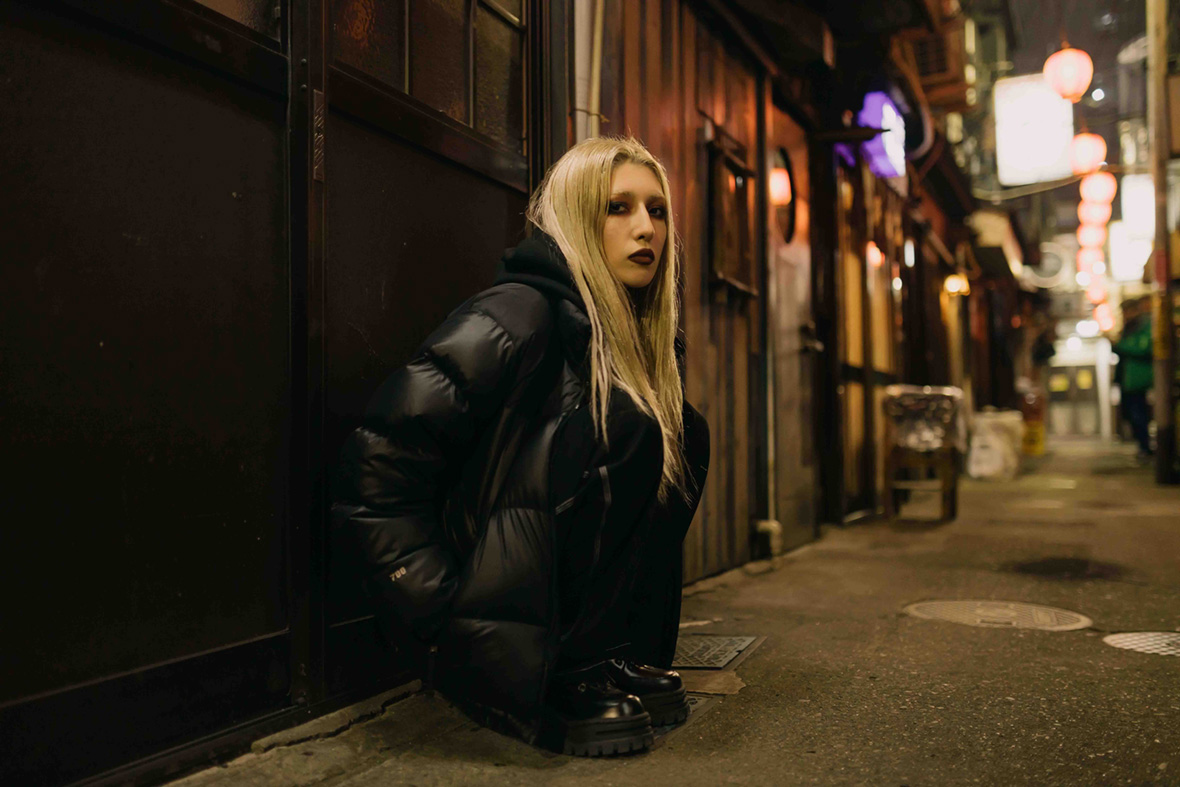
Utashiro believes her multiethnic background gives her an advantage, even if some people don’t know what to make of her. In Tokyo, where she returned at age 21, her heritage and style are misunderstood. “People think I have sex a lot. There’s a lot of slut shaming here,” she says. Her style is very sexually forward, and she’s unashamed of it. It’s a direct challenge to conventional gender roles in Japan, but it’s not a political move, she just does as she feels. “In all honesty, I’m a little selfish. I’m not trying to change anyone’s mind. But if they do, that’s cute too.”
In the end, she doesn’t care what anyone thinks. “I should be more considerate of my audience but I’m not saying anything for them, it’s for me. Because I need to get it out. The people I’ve always looked up to are living their true selves, doing purely what they enjoy.”
Nina Utashiro 认为自身的多民族身份会带来一些优势,甚至会带来一些人们会对她身份的好奇心。Nina 在二十一岁搬回了东京,她的作品和造型常常遭到人们异样的眼光,“人们会觉得我是一个喜欢滥交的人。在这里经常会有很多女德之类的东西存在,”她说。Nina 的造型极具性感并且不加掩饰,直接朝着日本女性角色的传统发起冲击。但这政治无关,她完全出于自己的想法和感觉。“老实说,我有点自私。我并不想改变任何人的观点。当然如果别人和我做了同样的事,那也是可爱的。”
归根结底,Nina 不在乎任何人对她的看法。“视频中我会更考虑到我的观众,但这并不是说为他们准备一切,一切的出发点还是我自己。因为我想把我内心的事物表达出来。我尊敬那些按照自己意愿活着的人,关心那些做自己真正喜欢的事情的人。”
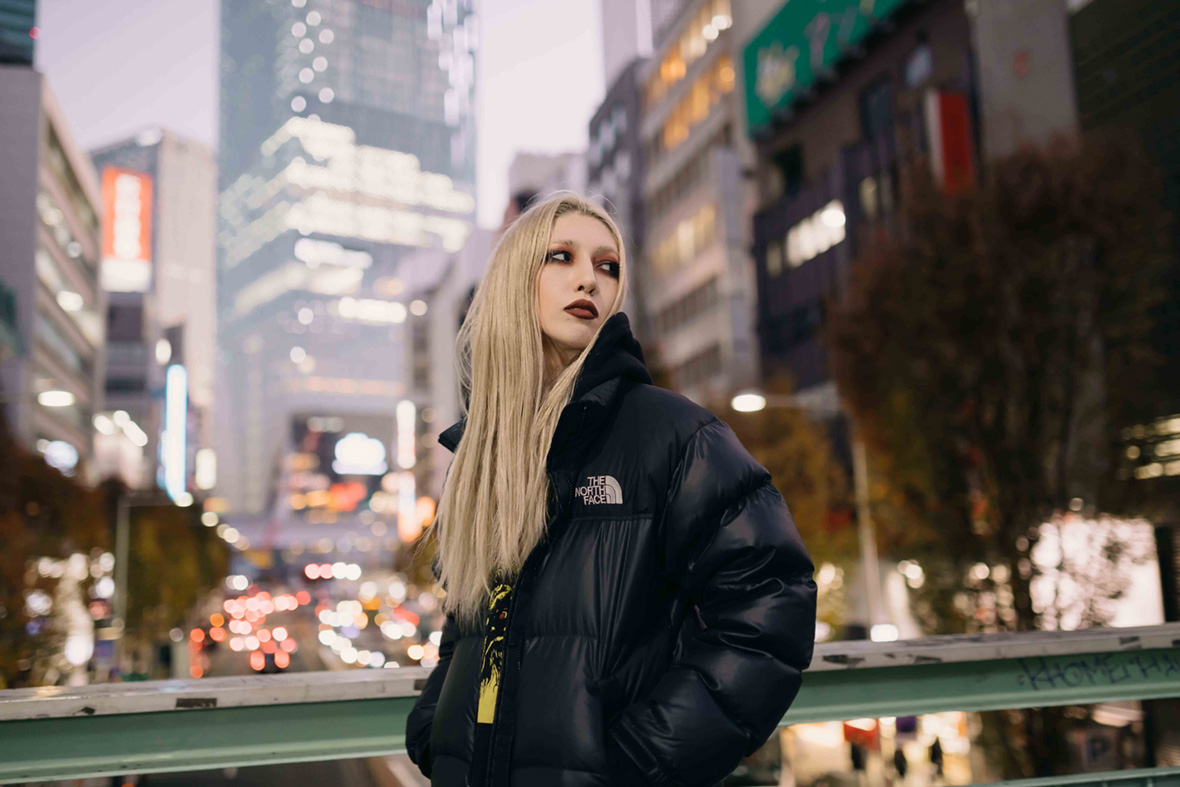
Like our stories? Follow us on Facebook and Instagram.
Website: ninautashiro.com
Instagram: @ninautashiro
YouTube: ~/thirteen13
Contributor: Mike Steyels
Photographer: Riku Yamashita
Chinese Translation: Pete Zhang
Website: ninautashiro.com
Instagram: @ninautashiro
YouTube: ~/thirteen13
供稿人: Mike Steyels
摄影师: Riku Yamashita
英译中: Pete Zhang



